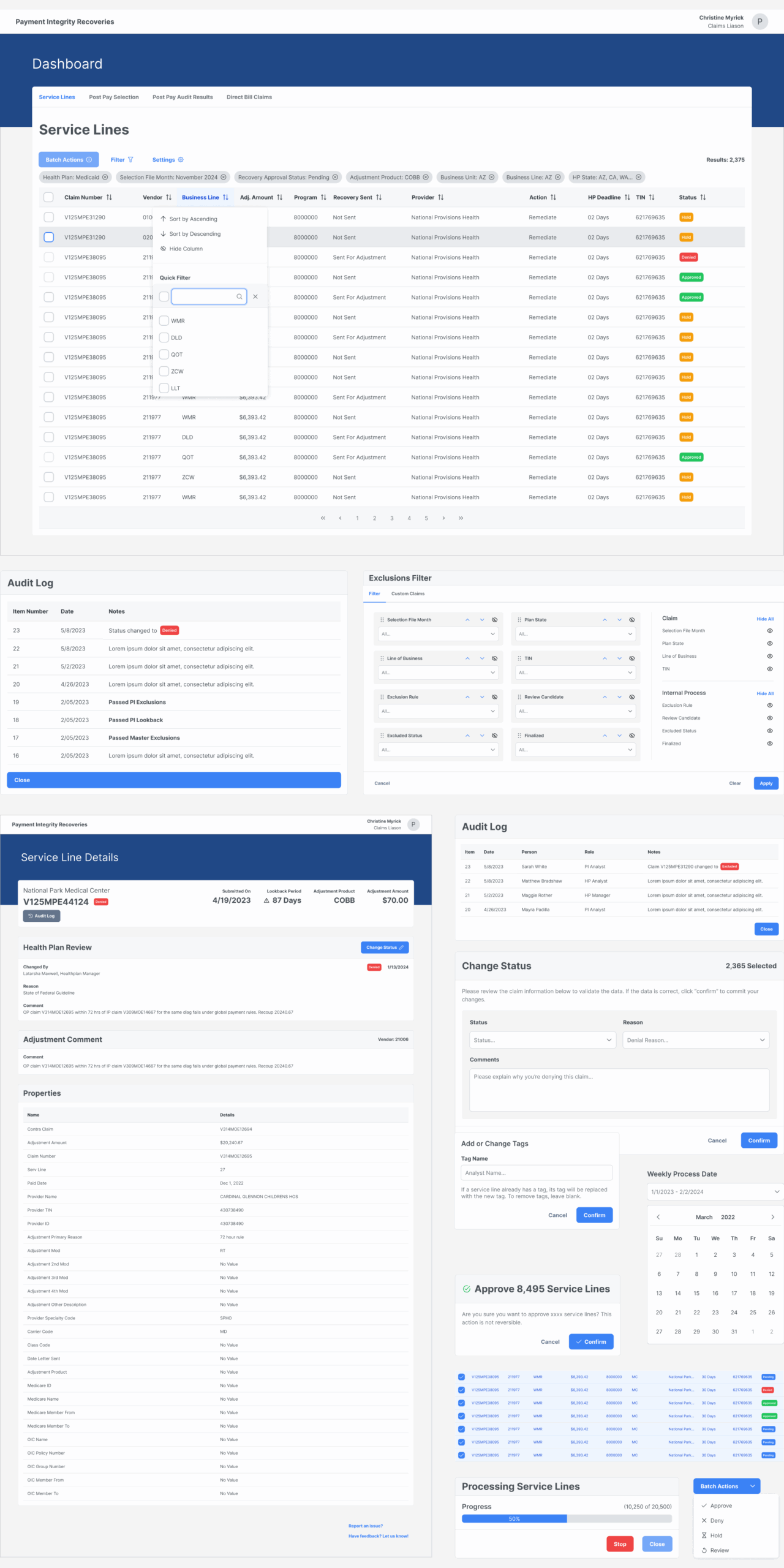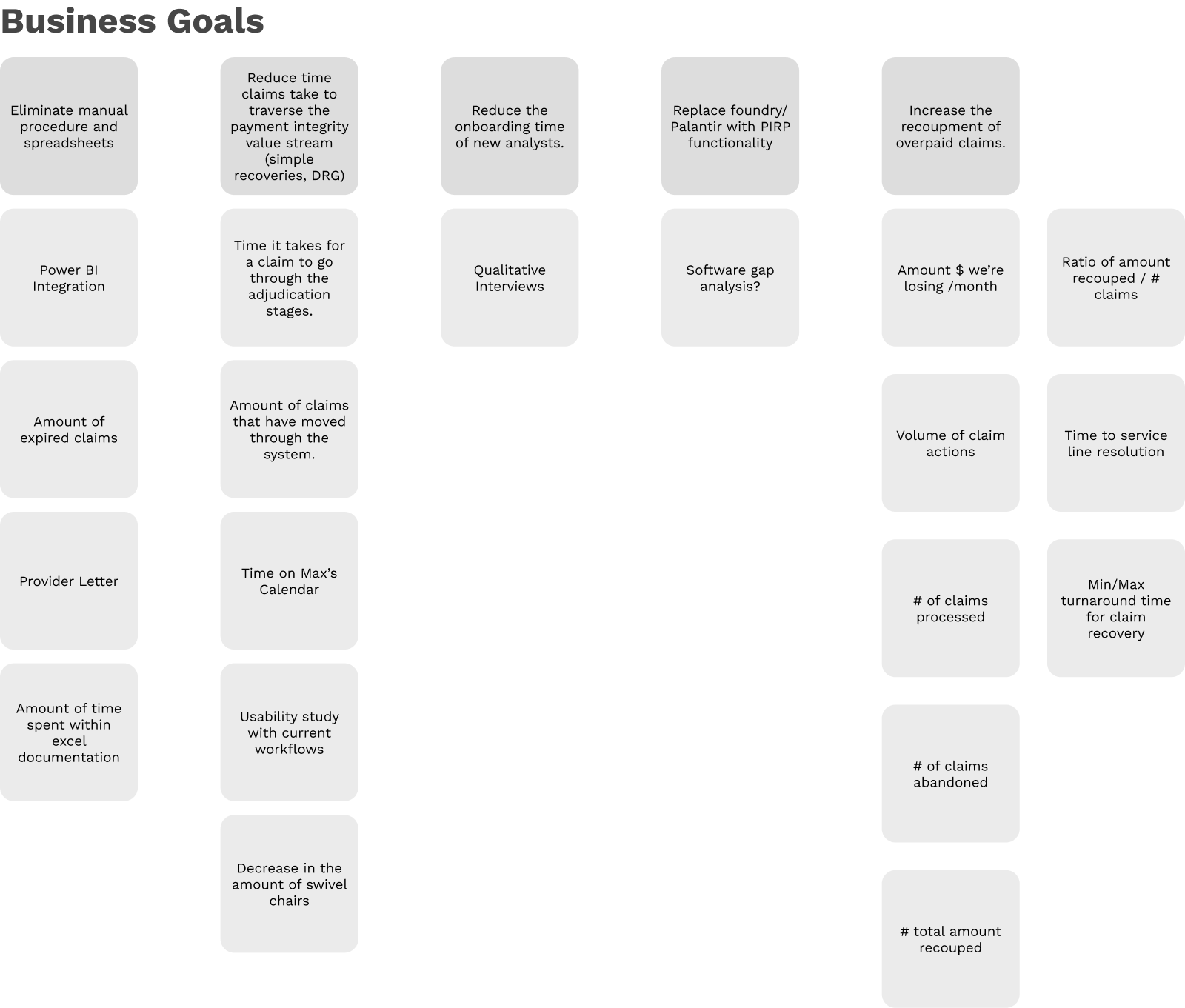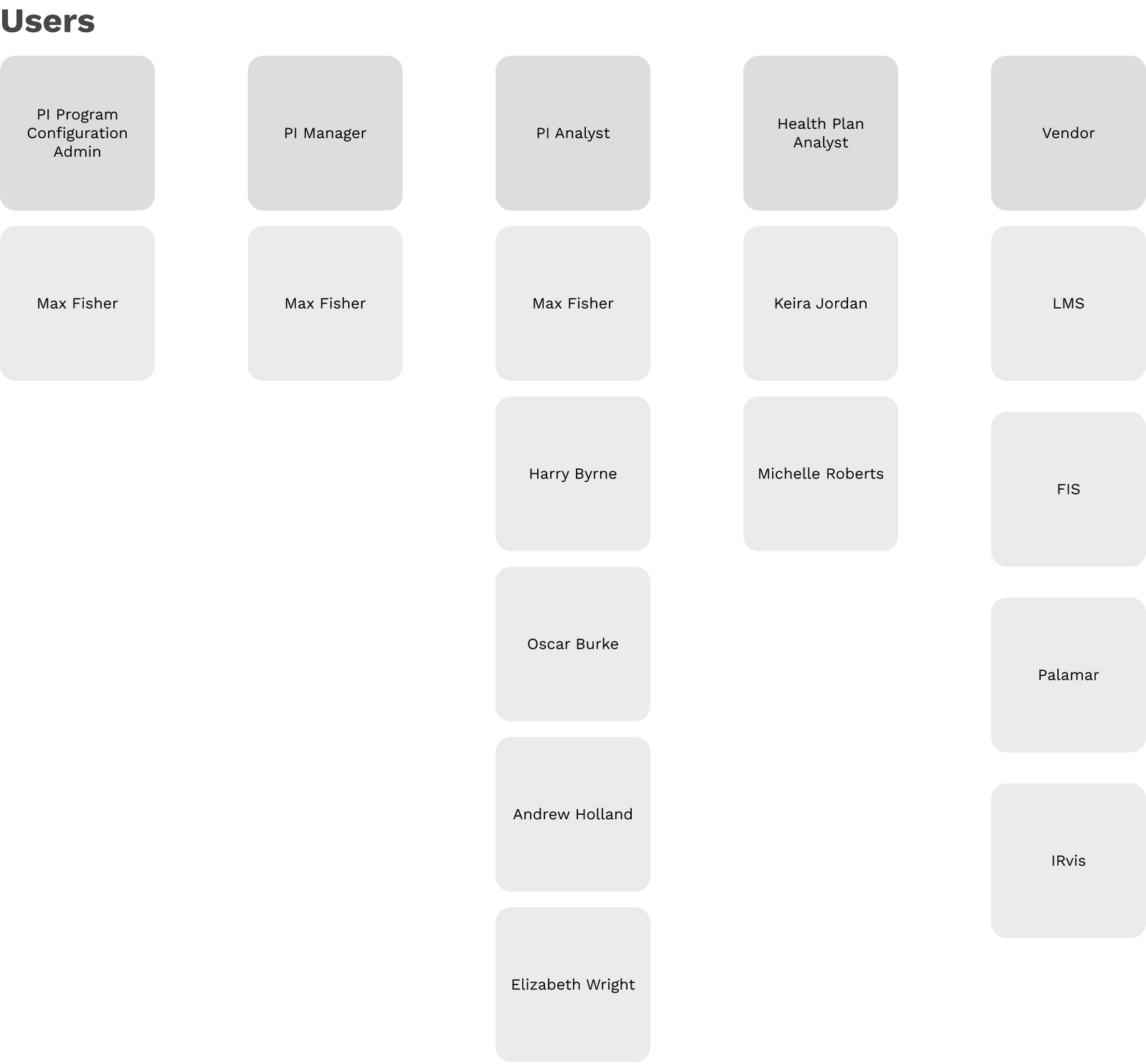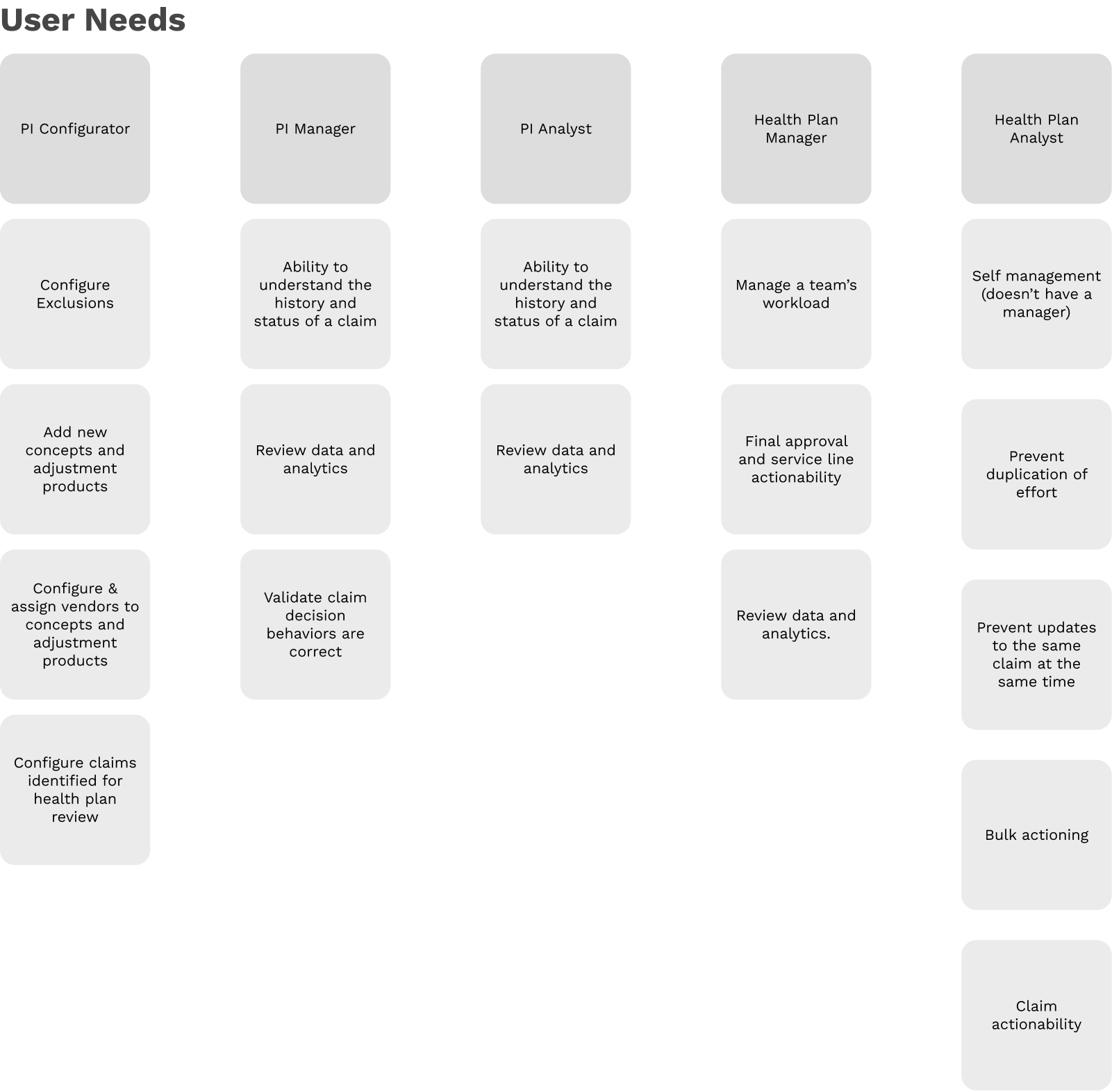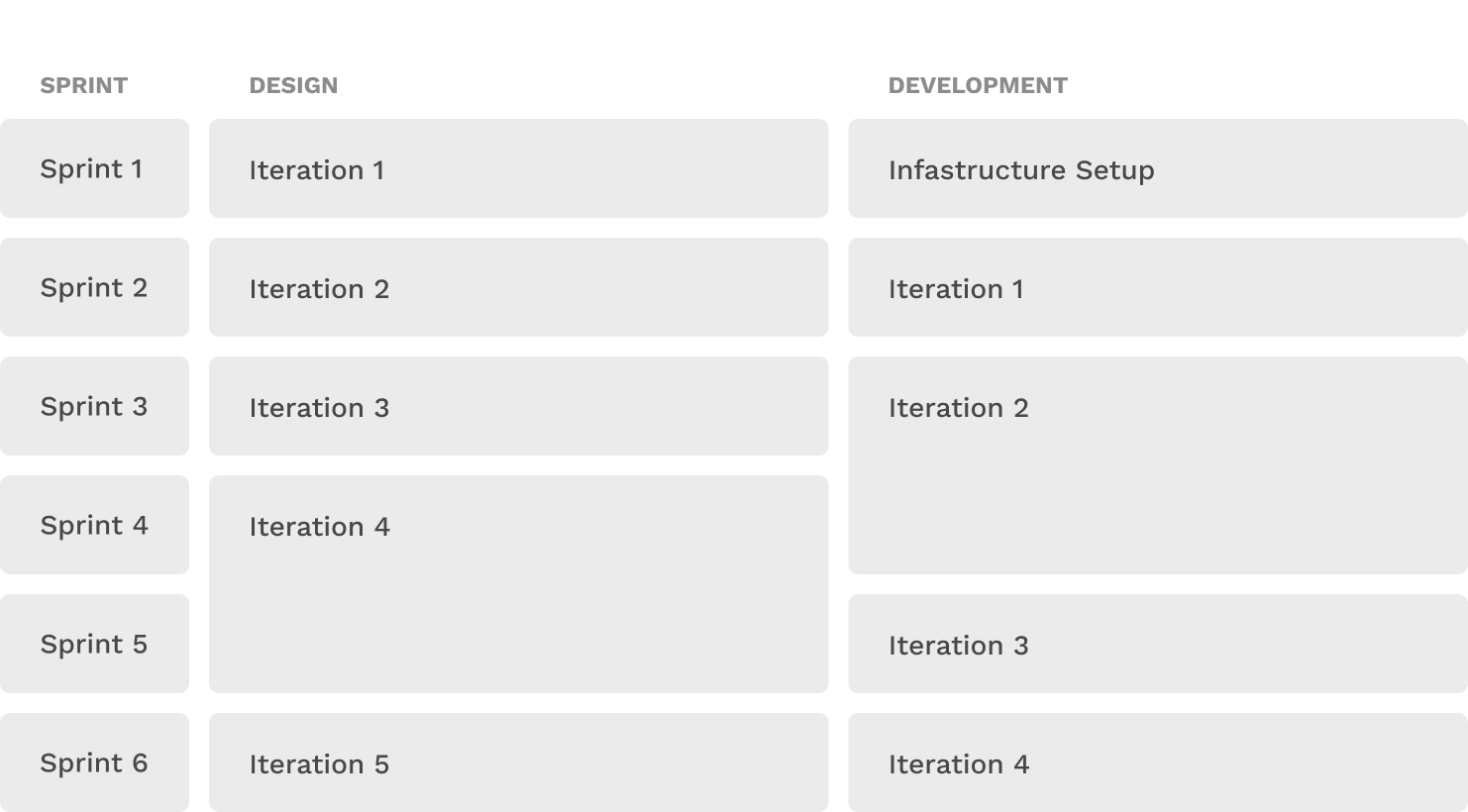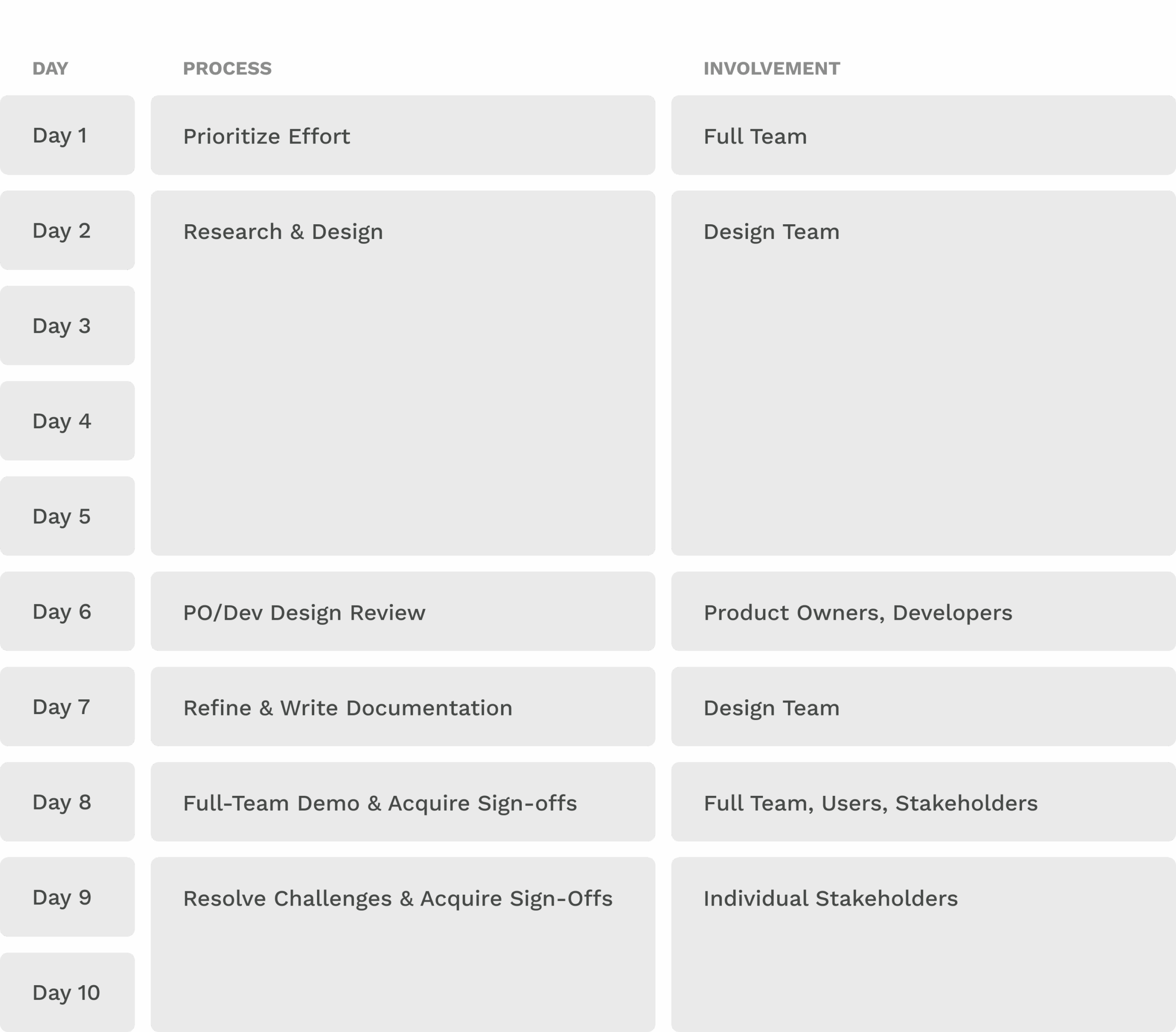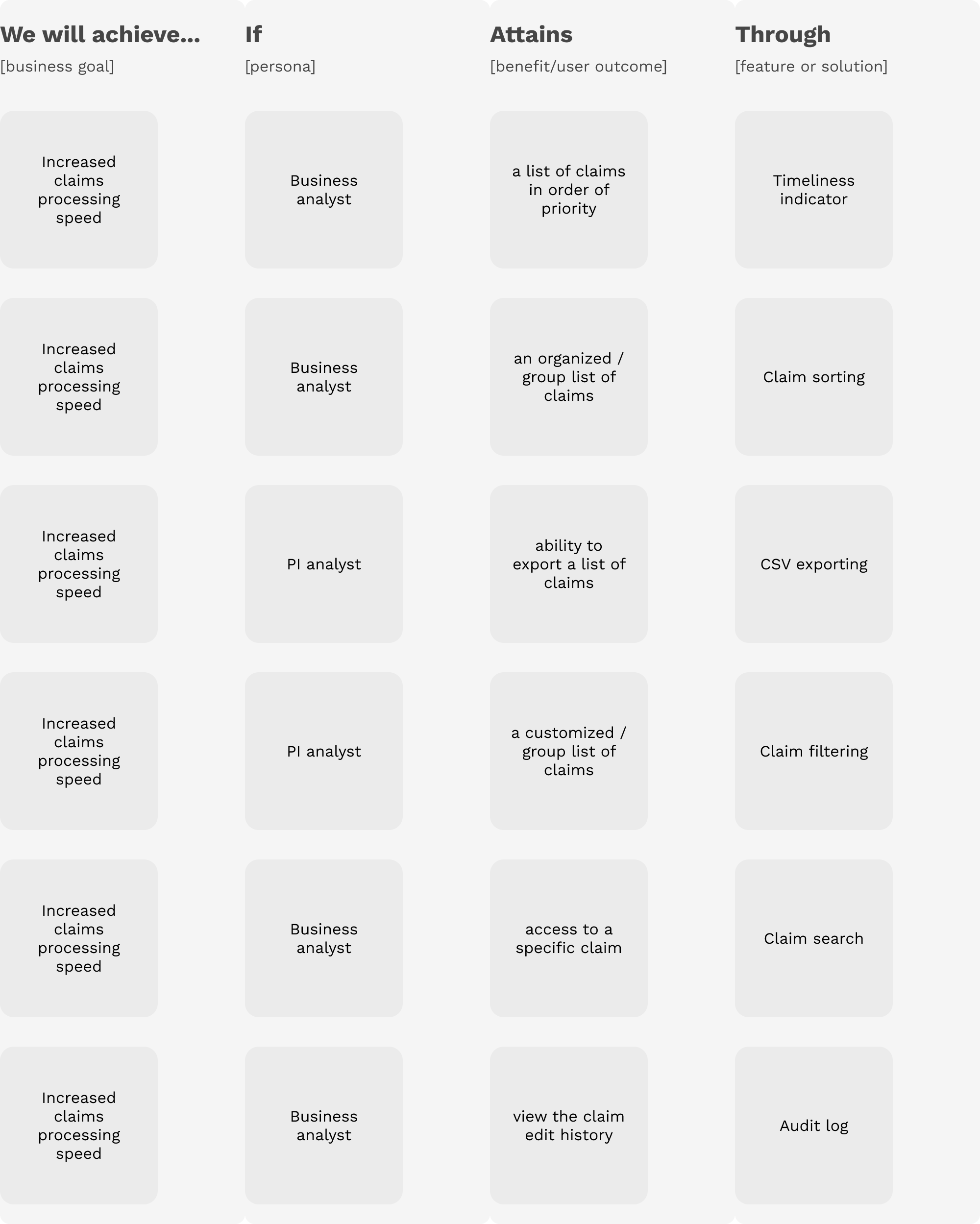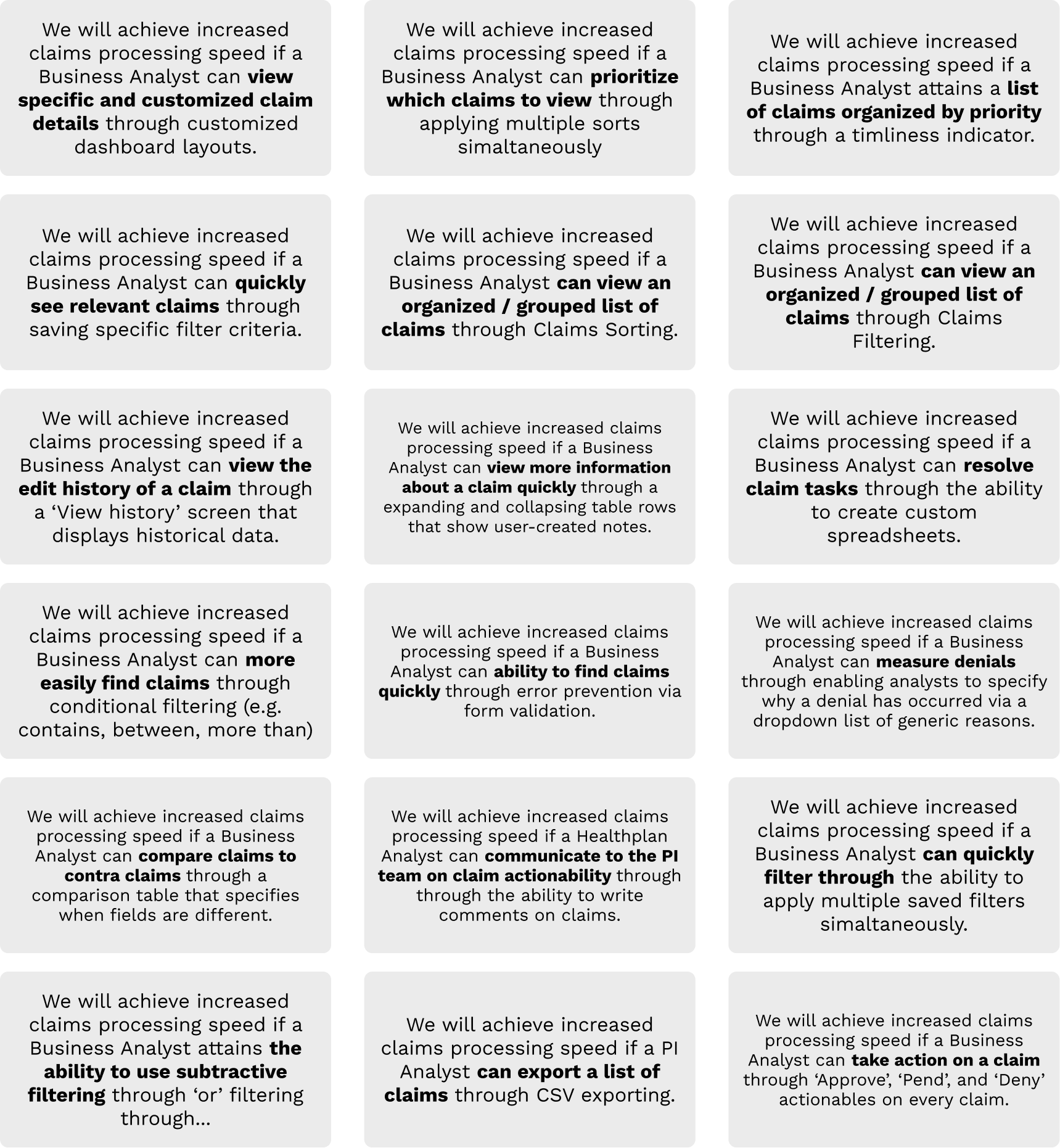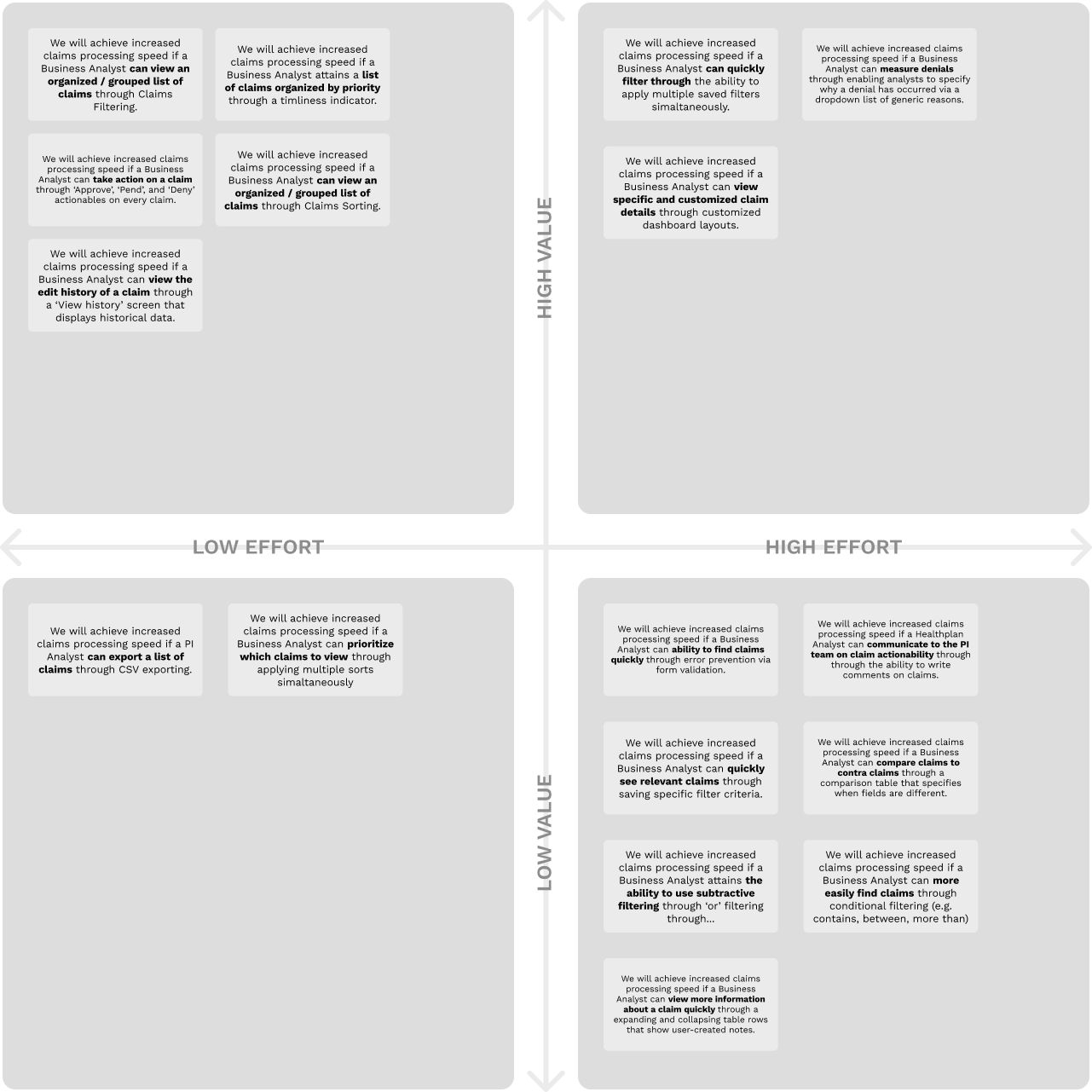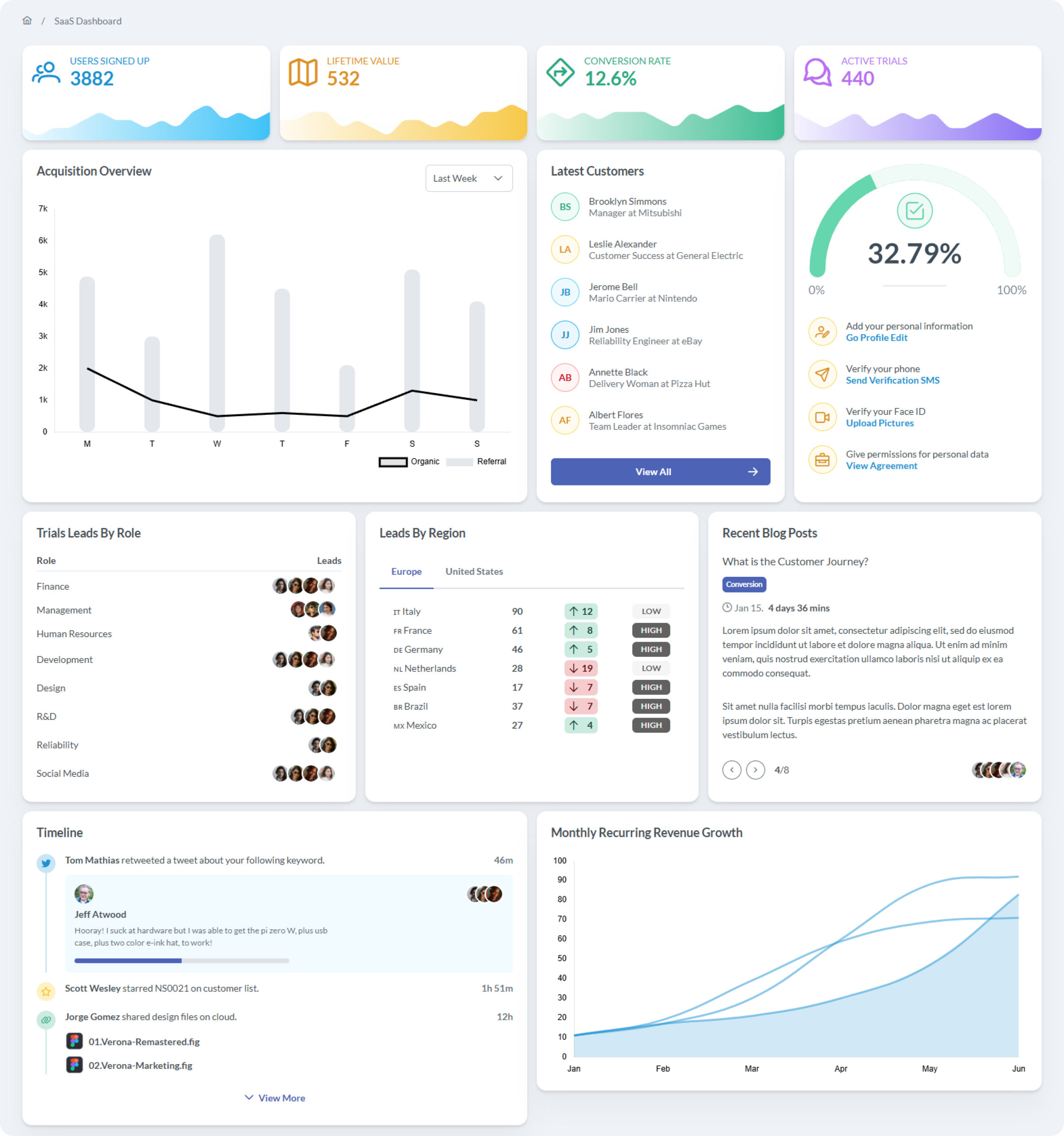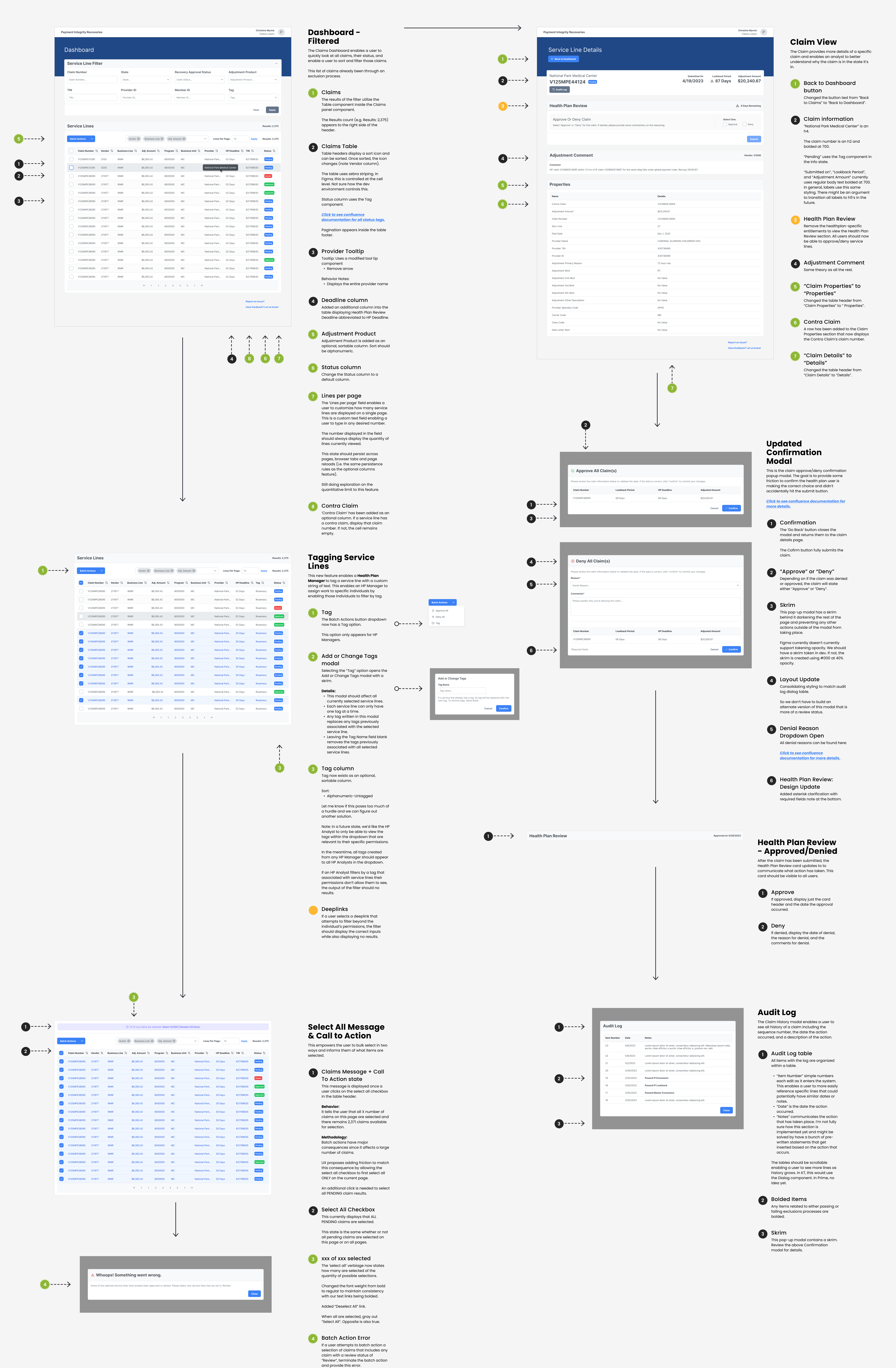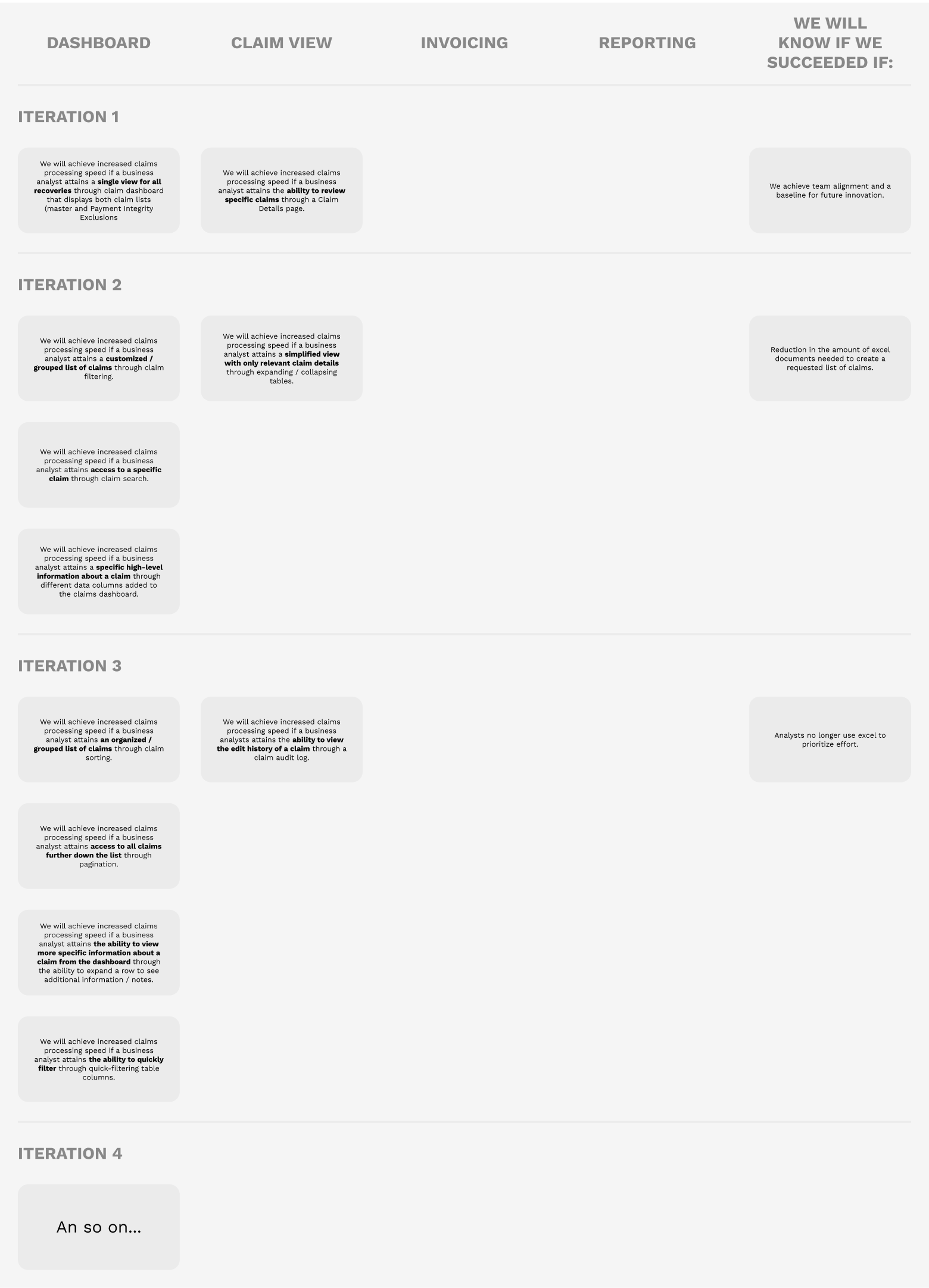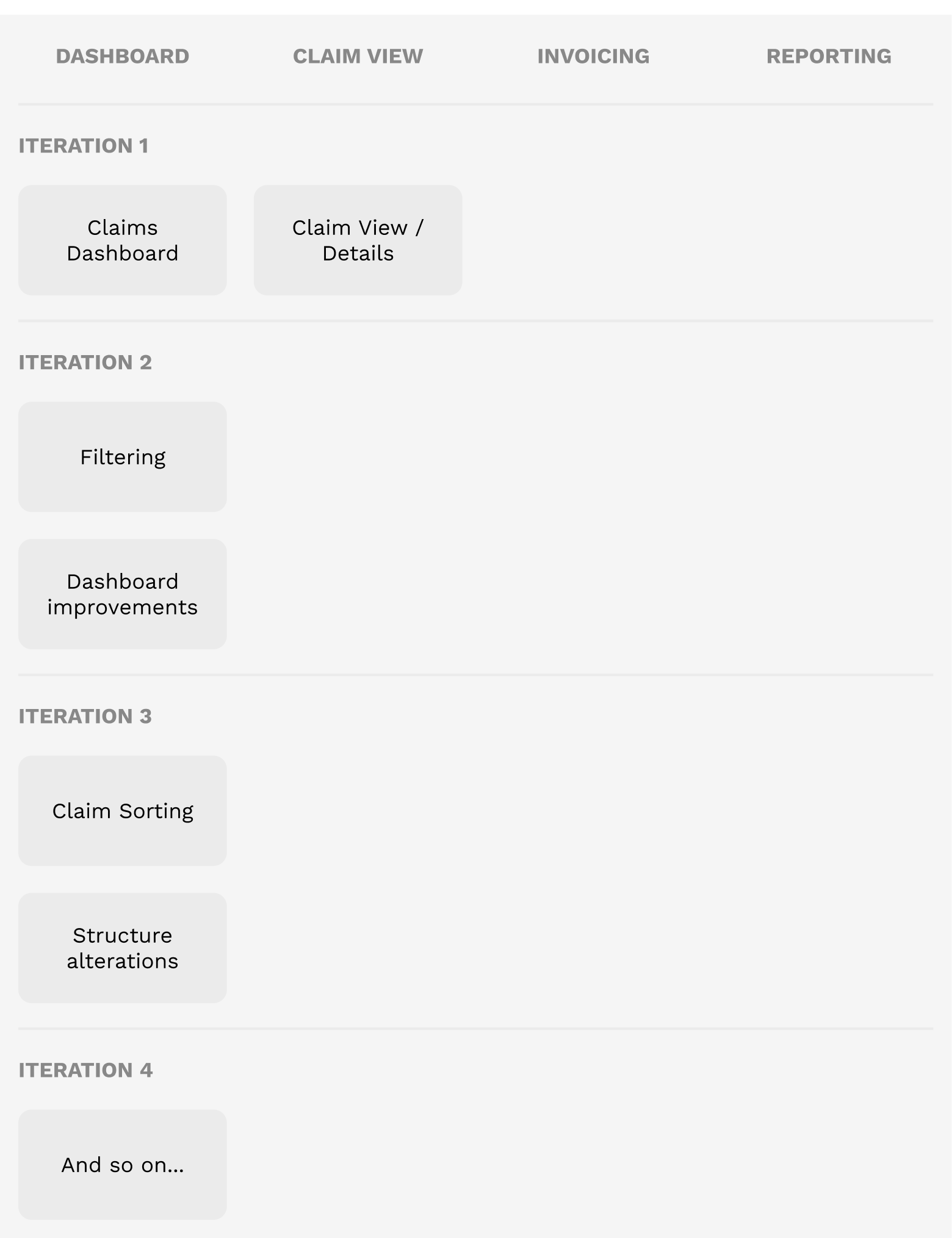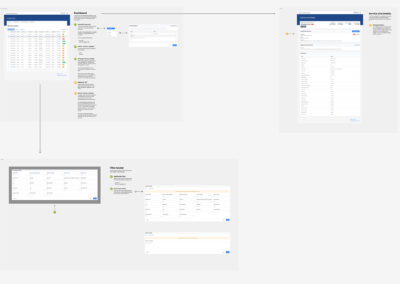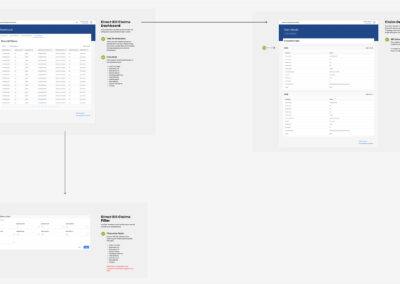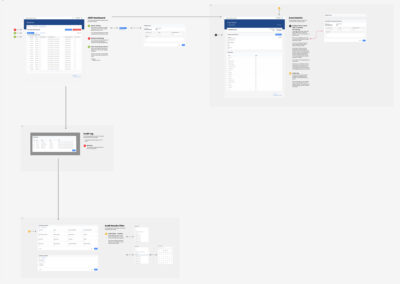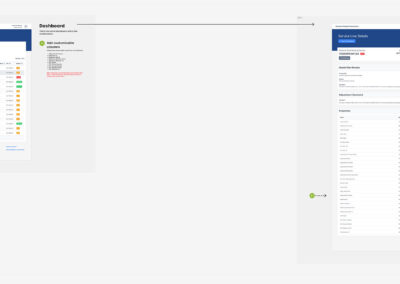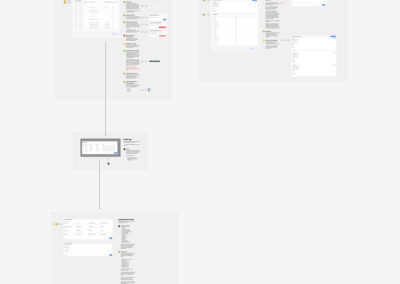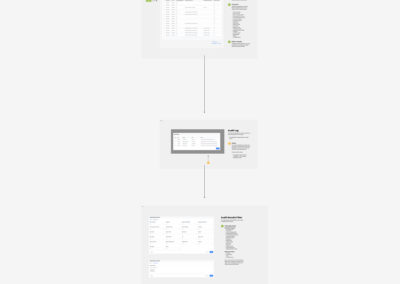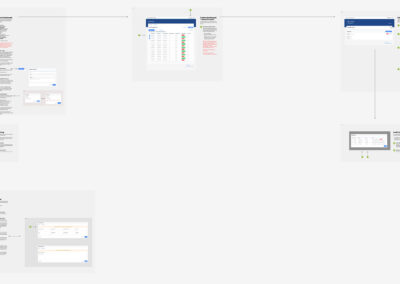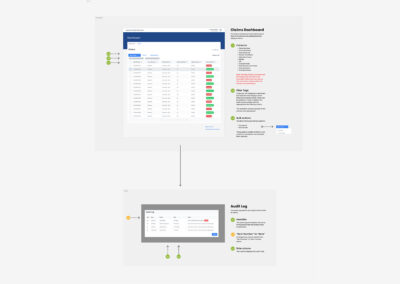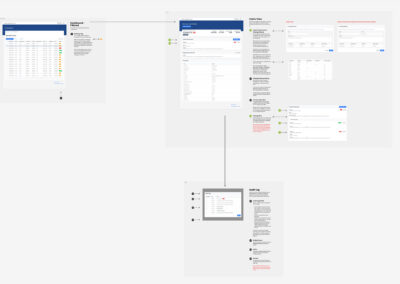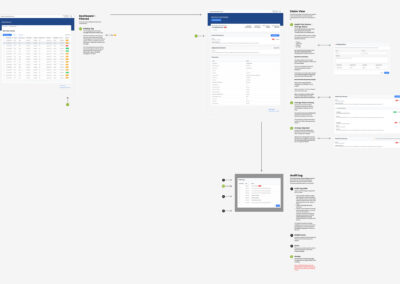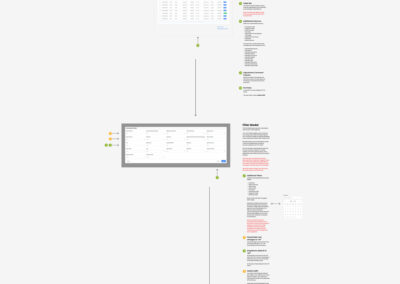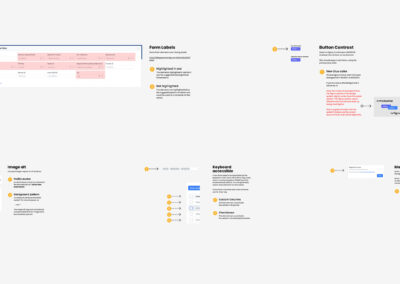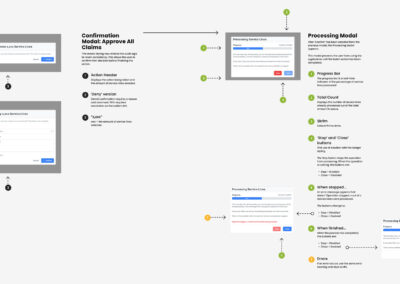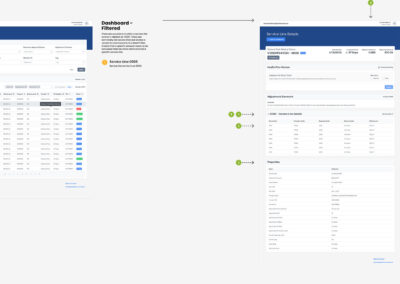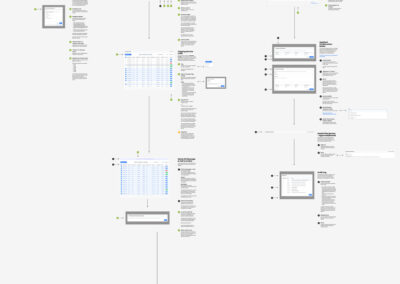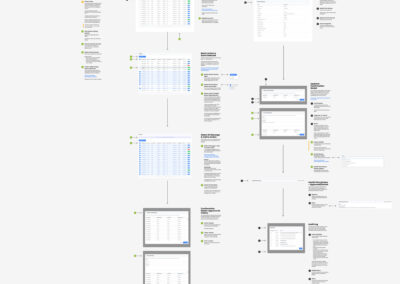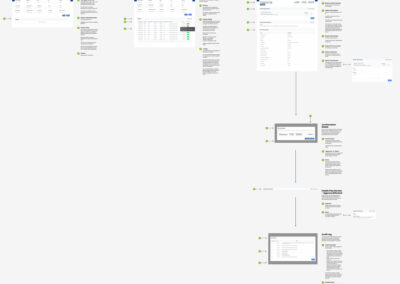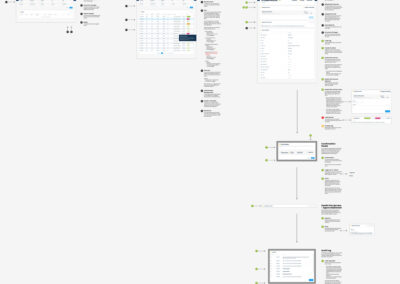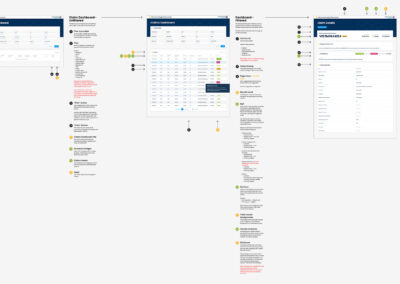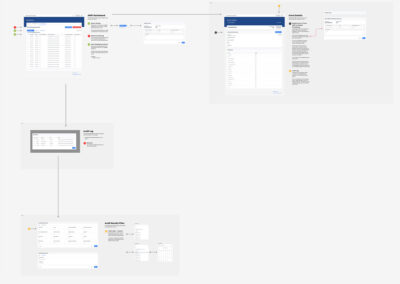Centene Recovery Platform
Leading a $40 million dollar Initiative to solve Insurance-hospital communication
Lead Product Designer
Consultation
Facilitation
Platform
Web App
Hybrid Product Team
Agile, Scrum
Duration
2 years
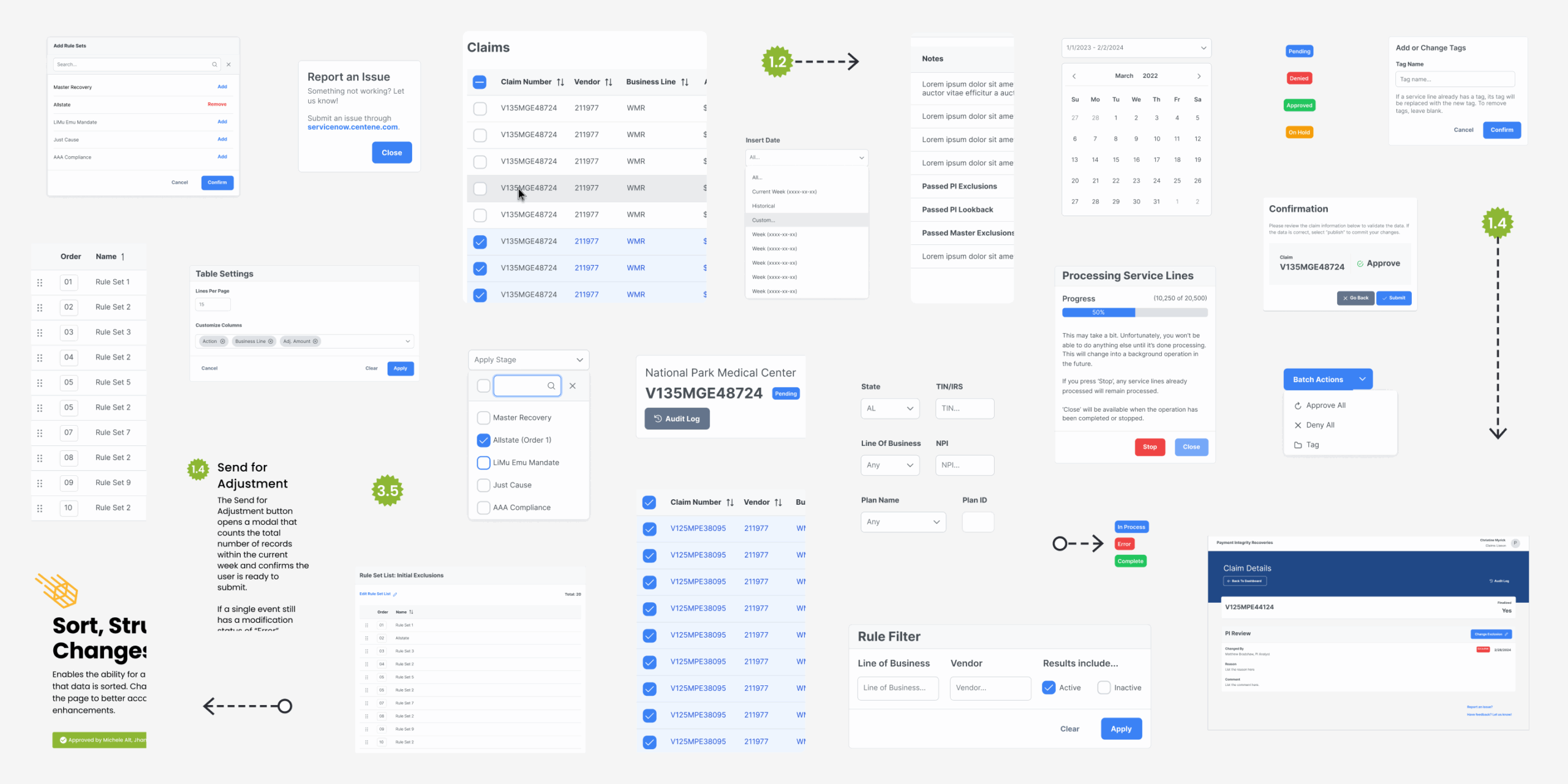
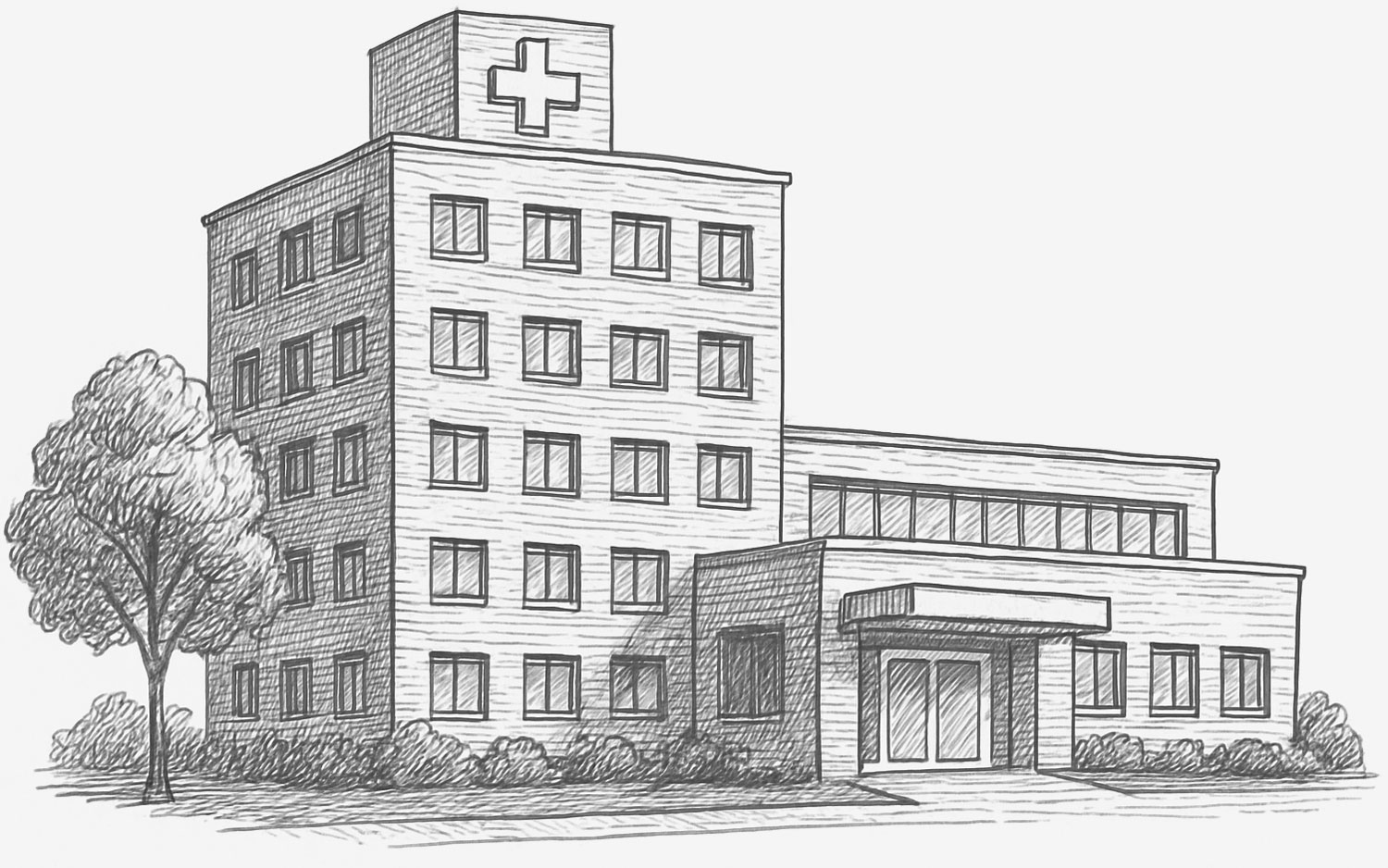
Who is Centene?
Centene Corporation is a leading healthcare enterprise specializing in government-sponsored and commercial healthcare programs, including Medicaid, Medicare, and marketplace insurance plans. As of writing this, Centene is listed as number 22 on Fortune 500 with 74,000+ employees.
The Problem
Steve, a patient receiving care at a hospital, has active health insurance. As part of his treatment, the hospital carefully tracks every service and charge incurred during his stay.
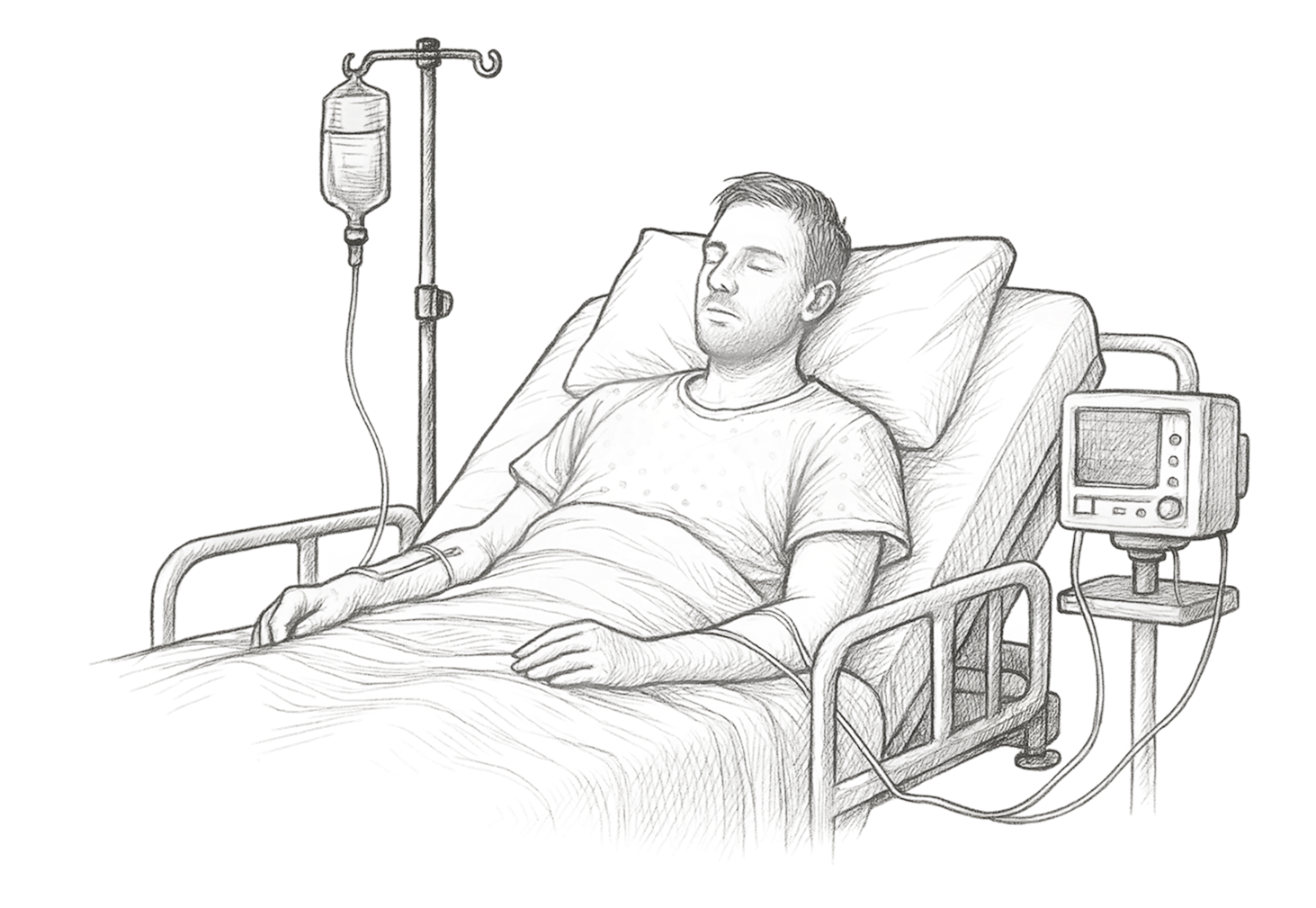
To insure uninterrupted care, Steve’s insurance overpays the hospital immediately.
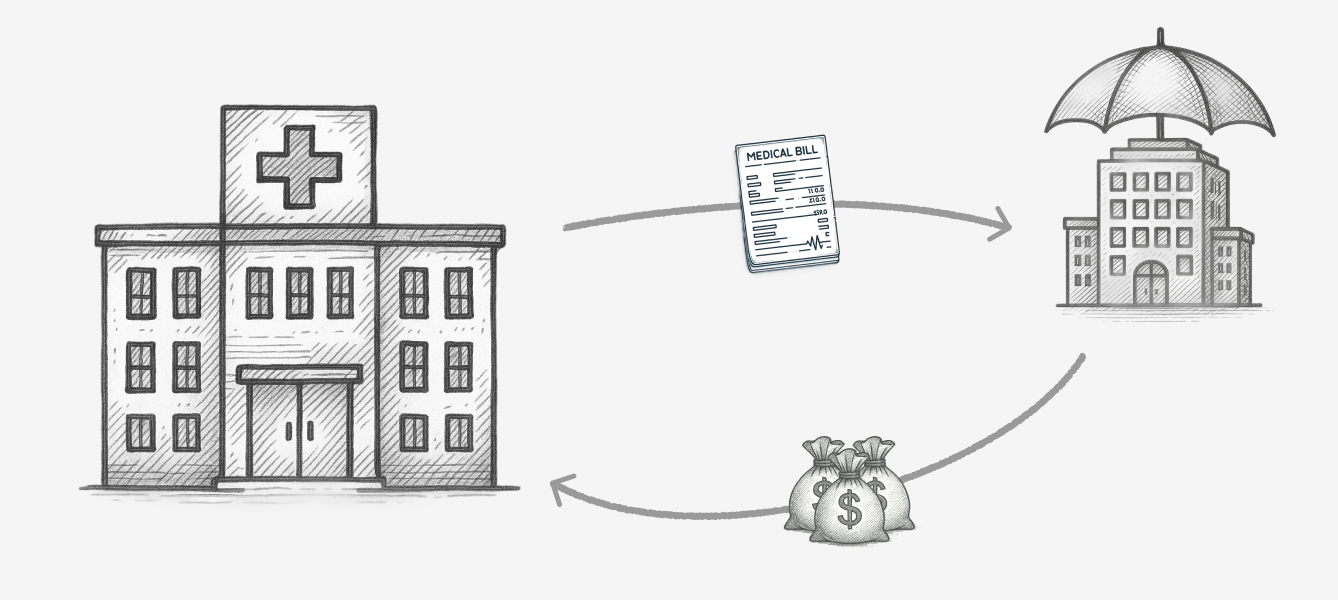
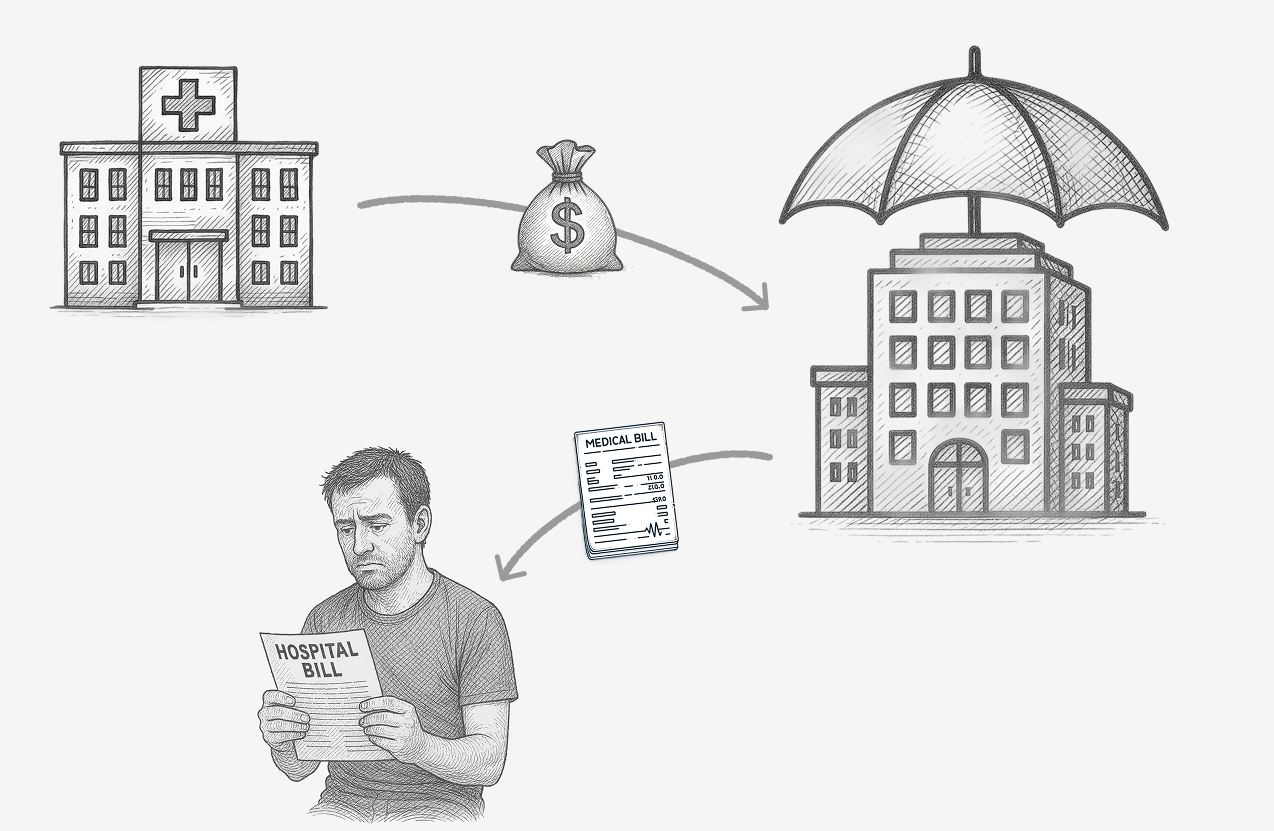
This process is time-consuming, prone to error, and ultimately leads to higher patient costs.
It takes two to four months to process recoveries in our current environment.
Every claim is overpaid by design. That’s just how the current system works.
The current process is costing us $34 million dollars annually.
We heavily rely on 3rd party vendors to manage this process for us.
Project Goal
Increase claim validation speed, minimize errors, and simplify the recovery calculation process.
Key Stage
Setting up the team
Our product teams followed a hybrid approach to team formation. This allowed us to run an in-house consulting model, enabling each product designer to embed themselves within other departments and product teams and lead those initiatives.
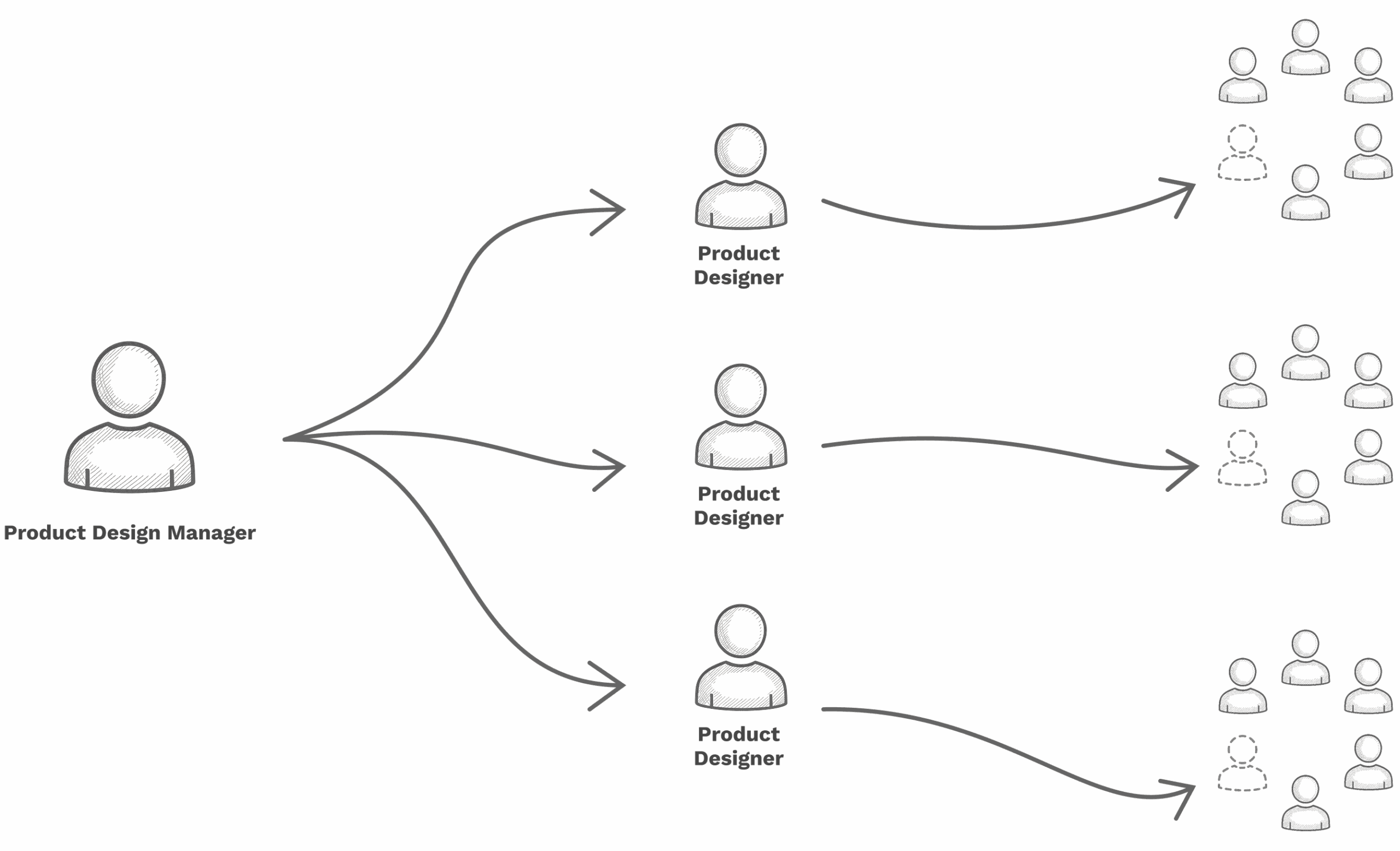
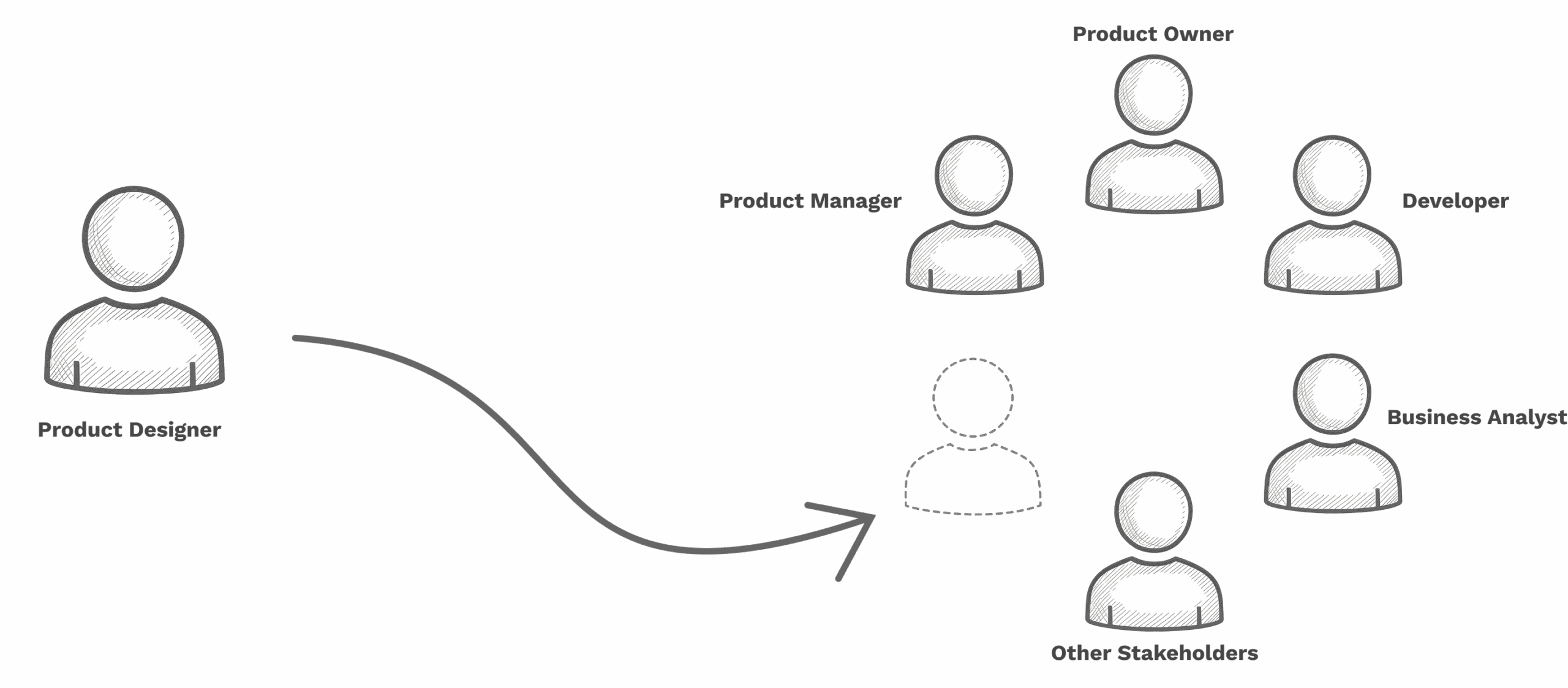
Defining The Approach
With a new team, it’s important to introduce a few fundamental frameworks the human-centered design process should follow. These frameworks include Agile product design, Lean thinking, and a general understanding of how product design process.
An introduction to these concepts begins with a presentation with a goal of building these mental models.


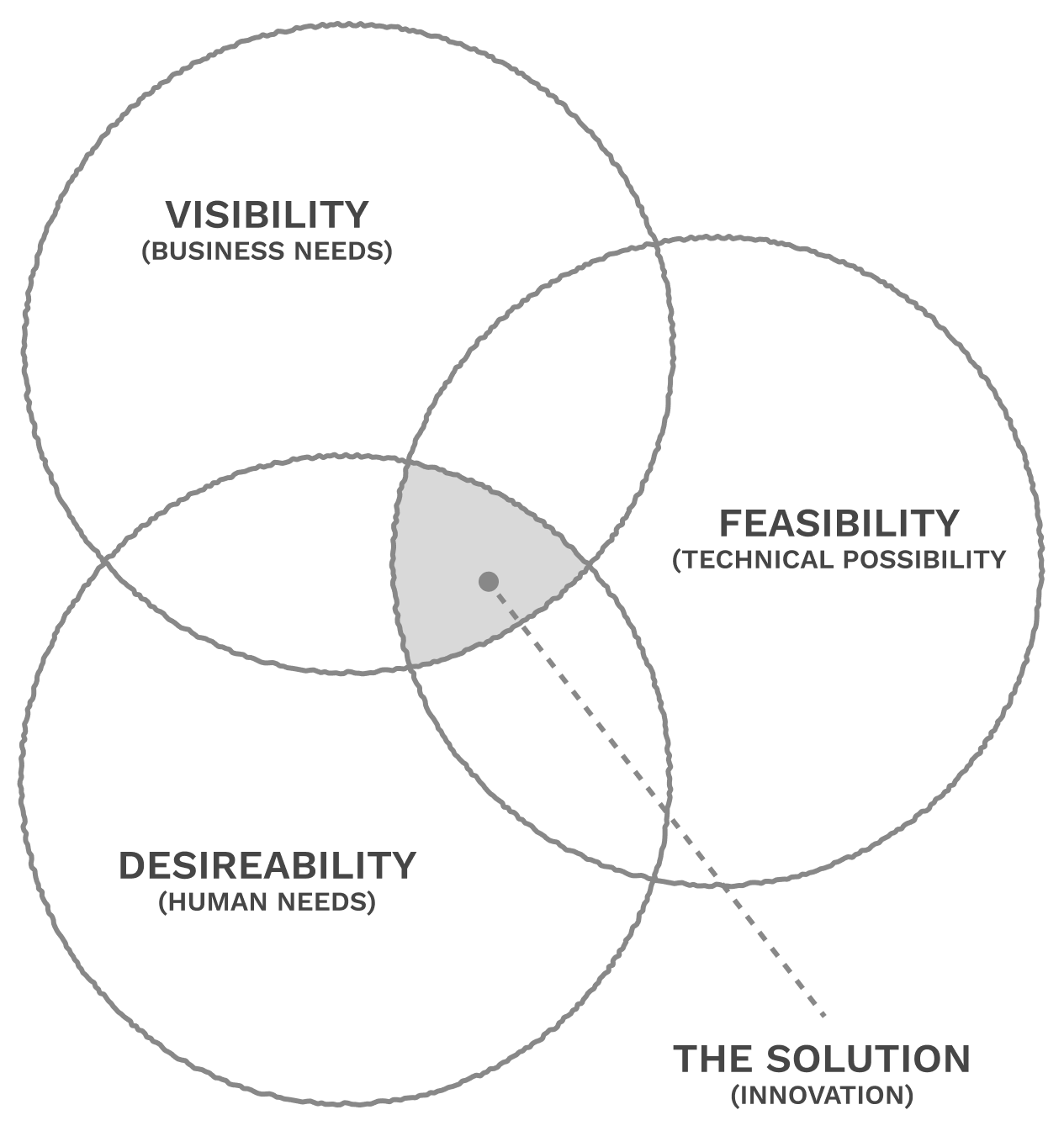
Gathering Team Alignment
I facilitate a Product Canvas exercise as a method of gathering team alignment. This exercise allows the team to form a shared basis of understanding. Moving forward, we can build momentum with known we all agree on where we currently are and the fundamental problems we’re trying to solve.
Introducing Dual-Track Agile
To maximize momentum in an Agile framework, I introduced the team to Dual-Track Agile. This cadence enables the product team to known their involvement with design and when.
This cadence cycles with each iteration, enabling the design momentum to stay ahead of development. The image below examples how this process works, but isn’t necessarily the exact timeline we followed.
Where We’re At So Far
Formation: Organized cadence, team structure, and stakeholder management.
Alignment: Agreement on business goals, target audience, and potential friction points.
Criteria: Understanding of business prioritization, desired impact, and potential product segmentation.
Key Stage
Prioritizing Outcomes
Prioritizing the Team
The next problem that needs solving is aligning a team on where effort should begin. With an agile mindset and an objective of publishing quickly, the goal is to determine where we can provide the most value with the least amount of effort.
The Hypothesis Prioritization process from Lean UX builds team alignment while prioritizing momentum. We can use the data collected from our Product Canvas to quickly build arguments.
Where We’re At So Far
Alignment: Agreement on outcomes that should be prioritized.
Momentum: Starting momentum on the specific iteration of effort.
Criteria: A list of outcomes that can now be measured and validated as success criteria.
Key Stage
Iteration Delivery
Test & Measure
To validate the momentum of this iteration, I demo with various stakeholders and users to challenge if the output drives toward the intended outcome. Feedback was gathered enabling us to build new hypotheses as we begin tackling the next iteration of outcomes.
I need to see the history behind the claim, the story it has gone through, and the decision-making that has been made along the way.
Would love to not have to open Amysis, Excellis, or other applications. It would be great to be able to see everything in one place.
I hate emails. We get far too many of them and things are getting lost
A big part of this process is vendor management — who gets what and how much. Looking at trend data has helped in the past but we could use deeper analytics.
Key Stage
Validation
Key Stage
Project Outcome
2 Years Later
149
Completed Business Goals
182
Hypotheses Tested
31
Developed Iterations
35
Unique Personas
53
Outcomes Delivered
125
Hypotheses Developed
64
Usability Tests
207
Completed User Needs
